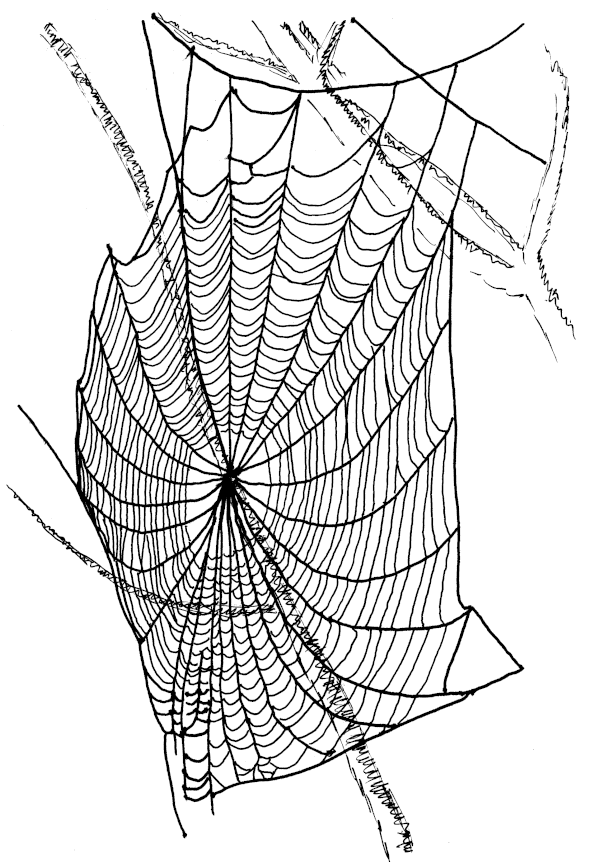Pre-Revolutionary Ropemaking in the American Colonies
7. Fibers
Strong fibers formed strong nations in the pre-industrial age...
The Forgotten History of Hemp Cultivation in America
Oscar "Hank" Will III,
2004[907]
Natural fibers come from minerals (rarely), animals, and plants.
Mineral Fiber
Although most modern, synthetic, fibers are petroleum based, there is
evidence of historical use of asbestos fibers for cloth, cordage, and
textiles.[190]
The Hohokam people in Arizona used asbestos in some of their cordage and
textiles.[480]
Benjamin Franklin had a purse made of asbestos fibers that ended up in the British
Museum.[760]
Mineral fiber cordage is so rare, it almost isn't worth mentioning, and yet the possibility was known in the American Colonies.
Animal Fiber
Gut
Animal intestines[405]
have long been used for:
- Violin Strings
[533]
- Tennis Rackets
- Bow Strings
- Spring Pole Lathe Strings
Gut is twisted wet, then stretched out until it is dry.
Gut becomes soft and stretches again if it gets damp.
Care must be taken to keep these strings out of the rain and away from
places where spilled liquids are a problem.
Hair
In the American colonies, horse hair was most often used,
but buffalo hair was used by the Plains Indians.
A single horse tail can make six to seven feet of 3/8ths
inch rope.
Any great length means you need a lot of horse tails or manes.
Horse tail hair is slick and hard, making it more difficult to work with than some other fibers.
It is usual to combine tail and mane hair when making
rope.
[405]
[745]
[976]
[977]
Mane and tail hair grow, roughly, at a rate of one inch a month. With a large
enough stable of horses, and limited demand, this can be a sustainable source
of useful fibers.
- George Washington ordered a horse hair well rope. Horse hair does not rot nor stretch when
wet.[888]
- Not rotting or stretching when wet make horse hair ideal for fishing
line.[790]
[634]
[283]
[886]
The most prized fishing lines are made exclusively
from the tails of male horses, stallions or geldings.
Hide
- Raw hide and leather from land animals are like gut,
in that they do not last long if they get
damp.[553]
[585]
- The frames of Alaskan kayaks are traditionally
lashed together with strips of seal
skin.[291]
- Hide ropes shrink as they dry. This can be useful if you need to
permanently bind dry
items.[610]
- Knots tied in damp hide ropes are very hard to untie
when dry.
Sinew
Sinews are very strong, and the fibers glue themselves together
when dampened. Uses include:
- Bow Strings
Otzi, the Iceman's bowstring (c. 3200 B.C.) was three-ply
sinew.[070]
- Spring Pole Lathes
- Often used to attach arrowheads to shafts.
- For sewing leather goods.
Like gut and hide, these ropes and cords must be kept dry, or they become soft and lose their strength.
Other Animal Fibers
There are other fibers, produced by different animals, that could be used for
ropemaking, but they are either not local to the American Colonies, or are just too
expensive for something as prosaic as rope. Or both.
- Silk
A single silkworm cocoon yields 300 - 900 yards of raw
silk.[558]
It takes about 3000 cocoons to make a pound of
silk.[300]
100 feet of 1/4 inch rope weights something over two pounds.
Silkworm eggs and mulberry trees were introduced to the American
colonies in
1603.[530]
Efforts to produce silk commercially in the Colonies continued through the 1760s.
Silk has been used to make cords to fasten the clothing
of the very
rich.[530]
- Spider Silk
Where a single silkworm can produce 300 to 900 yards of silk,
a single spider web has only 12 yards of usable
silk.[558]
The diameter of spider silk is around 1 / 50th of the
diameter of a human hair.
In the 1770s, a French naturalist, Francois Xavier Bon de
Saint Hilaire, made a pair of spider
silk gloves, which he presented to the French
Academy.[870]
Saint Hilaire used the silk from spider egg cases.
The first time
I tried to make rope from spider silk,
I wrapped several large garden spider webs onto a stick
one dewy morning, when the webs were easily seen. I found twelve webs,
was able to squish/pack the webs into a long thread, then twist and fold
a three strand cord from that. There was maybe a foot of finished "rope",
thinner than one of my eye lashes.
The time involved gathering the material for a spider silk rope would
put the cost way beyond anything any reasonable person would want to
spend.[550]
[920]
|

Figure 7.1: Spider Silk.
|
- Sea Silk
Sea silk (byssus) is the name given to the fibers that one variety of clam, (Pinna nobilis),
uses to anchor itself to rocks and ships.
Sea silk has a long history in textile production, but
again, the material is far too costly for
rope.
[190]
[258]
[280]
[858]
- Baleen
Baleen, or whalebone, is the material filter-feeding whales use to strain krill
from sea water. It is very fibrous, and has been used in whale hunting communities
to make
cordage.[200]
[291]
[535]
Baleen has the advantages of not rotting in sea water, and staying flexible
in sub-freezing weather.
Plant Fiber
Plants provide the highest volume of fibers for rope making, by far.
The labor cost per pound for vegetable fibers is much lower than any of the animal fibers.
All English ships in the Colonial era used hemp rope.
Many tons of hemp were turned into rope, every year, at every major port in the world.
People not involved supplying rope for the sailing trade had many other vegetable
sources available.
Usable fibers are found in plant stems, leaves, roots, bark, and seeds. The wild grasses, vines, and trees
surrounding a Colonial farm could provide cordage for most everyday needs.
Next...
Processing Vegetable Fibers
